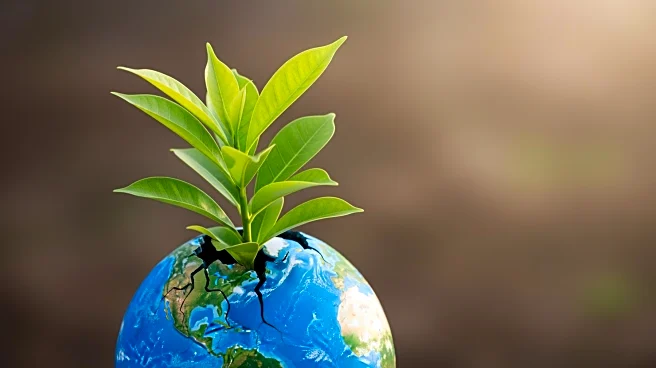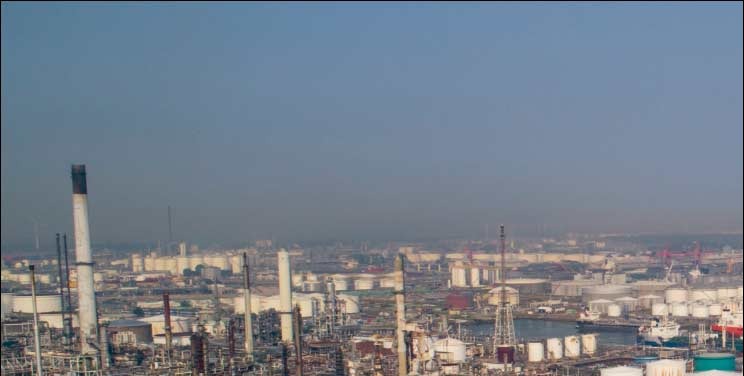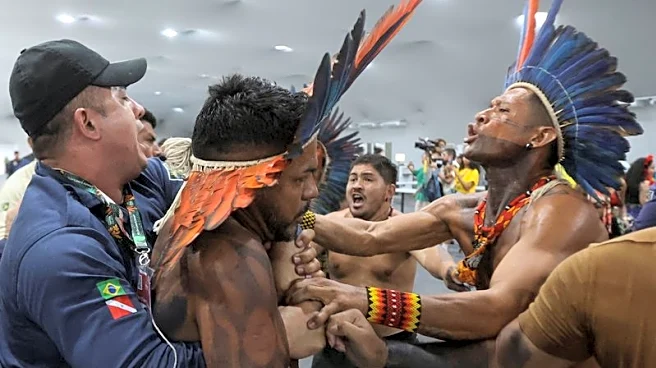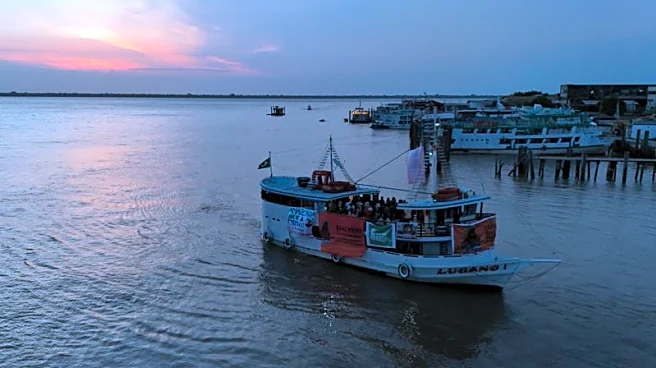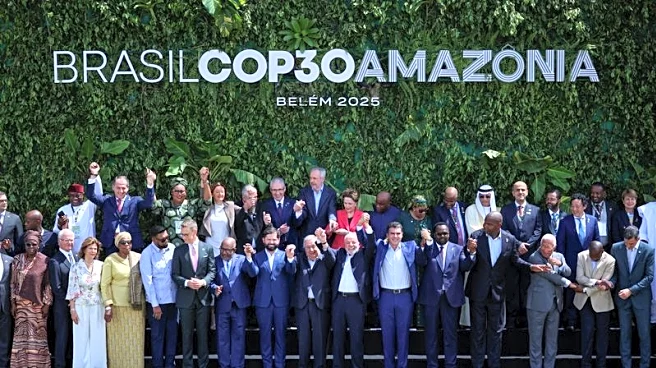What's Happening?
Dozens of protesters forced their way into the United Nations climate summit venue in Belem, Brazil, demanding urgent environmental action and forest protection. The COP30 summit, attended by thousands
of delegates from around the world, became the site of clashes between security guards and protesters. The incident resulted in injuries to at least two security personnel. Indigenous communities, highlighted by Brazilian President Luiz Inácio Lula da Silva as key players in the summit, expressed anger over development in the Amazon rainforest. The protest underscores the tension between environmental activists and governmental policies.
Why It's Important?
The protest at COP30 highlights the growing urgency and public demand for effective climate action and forest conservation. It reflects the frustration of indigenous communities and environmental activists over perceived inadequate measures to protect the Amazon rainforest, a critical component in global climate regulation. The event draws attention to the need for international cooperation and stronger commitments to environmental sustainability. It also emphasizes the role of indigenous communities in climate discussions, potentially influencing future policy decisions and international agreements.
What's Next?
The aftermath of the protest may lead to increased pressure on governments and international bodies to address the concerns raised by activists. There could be calls for more inclusive dialogue involving indigenous communities in climate policy-making. The incident might prompt a reevaluation of security measures at international summits and influence future strategies for engaging with protestors. The ongoing discussions at COP30 may incorporate the demands for more robust environmental protections, potentially affecting the outcomes of the summit.



